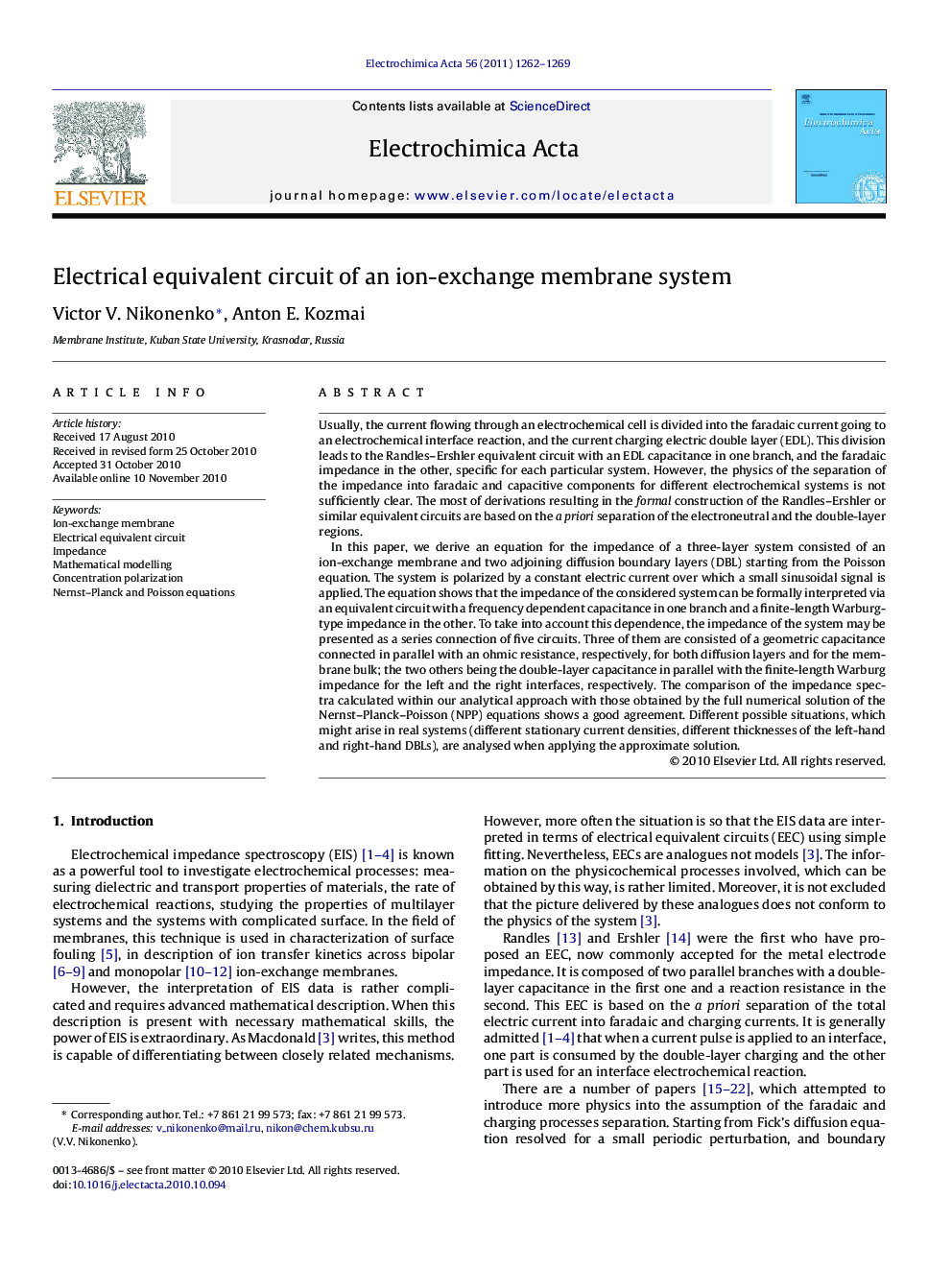| Article ID | Journal | Published Year | Pages | File Type |
|---|---|---|---|---|
| 191402 | Electrochimica Acta | 2011 | 8 Pages |
Usually, the current flowing through an electrochemical cell is divided into the faradaic current going to an electrochemical interface reaction, and the current charging electric double layer (EDL). This division leads to the Randles–Ershler equivalent circuit with an EDL capacitance in one branch, and the faradaic impedance in the other, specific for each particular system. However, the physics of the separation of the impedance into faradaic and capacitive components for different electrochemical systems is not sufficiently clear. The most of derivations resulting in the formal construction of the Randles–Ershler or similar equivalent circuits are based on the a priori separation of the electroneutral and the double-layer regions.In this paper, we derive an equation for the impedance of a three-layer system consisted of an ion-exchange membrane and two adjoining diffusion boundary layers (DBL) starting from the Poisson equation. The system is polarized by a constant electric current over which a small sinusoidal signal is applied. The equation shows that the impedance of the considered system can be formally interpreted via an equivalent circuit with a frequency dependent capacitance in one branch and a finite-length Warburg-type impedance in the other. To take into account this dependence, the impedance of the system may be presented as a series connection of five circuits. Three of them are consisted of a geometric capacitance connected in parallel with an ohmic resistance, respectively, for both diffusion layers and for the membrane bulk; the two others being the double-layer capacitance in parallel with the finite-length Warburg impedance for the left and the right interfaces, respectively. The comparison of the impedance spectra calculated within our analytical approach with those obtained by the full numerical solution of the Nernst–Planck–Poisson (NPP) equations shows a good agreement. Different possible situations, which might arise in real systems (different stationary current densities, different thicknesses of the left-hand and right-hand DBLs), are analysed when applying the approximate solution.
